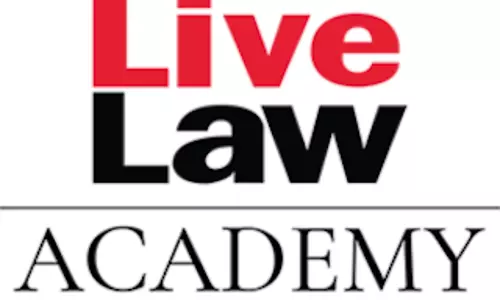Humour And Persons With Disabilities— The Thin Difference Between “Disability Humour” And “Disabling Humour”
Dr. Nidhi Sharma
9 May 2025 12:12 PM IST

An application was was recently filed by M/s Cure SMA Foundation[1] against the controversial comedian Samay Raina with regard to the remarks made by him and his guests on the show titled India's Got Latent which was aired on YouTube. The plea was filed in relation to the offensive and non-amusing remarks camouflaged as “humour” made against the expensive treatment of Spinal Muscular Atrophy (SMA)[2] involving a 2-month child on one occasion and passing of derogatory remarks against a visually impaired participant[3] on another occasion. The application was heard during the proceedings in the petitions filed by the Youtube Podcasters Ranveer Allahabadia and Ashish Chanchlani, the other guests on the said show. The said plea stated that, “…such remarks result in perpetuating a lack of self worth in the persons with disabilities and leads to their alienation from the society which makes them even more susceptible to discrimination and indignities.”[4] The bench comprising of Honourable Justices Surya Kant and N. Kotiswar Singh while hearing the plea regarded this as a serious issue and told the senior advocate Aparajita Singh appearing for the Foundation to file a comprehensive petition in place of an application and place on record the video-clipping along with the transcript against the concerned persons.
Art has a social purpose, and art belongs to the people.[5] The statement holds testament to the fact that every citizen of India has the right to air and express his or her views through the print or the electronic/social media. But the said right is not absolute in nature and is subject to the permissible restrictions imposed under Article 19(2) of the Constitution.[6] However, the incidents as the one mentioned in the preceding paragraph raise an important question, Does the freedom to express speech or showcase art [in this case the humour] include the passing of derogatory and discriminatory remarks against the marginalised sections of the society?
Expression of humour, satire or any other form of art is the fundamental right of an individual but if it targets the rights, dignity and creates prejudice against any marginalised section of the society it has to be addressed, and restrictions imposed under Article 19(2) must be strictly adhered to. The Supreme Court while referring to “satire” as a literary genre in the case titled Indibility Creative Pvt. Ltd. Vs. Government of West Bengal[7] observed:
“…when satire targets society's marginalised, it can have the power to confirm and strengthen people's prejudices against the group in question, which only marginalises and disenfranchises them more.”
Simply put any form of art which is showcased at the expense of the dignity of an individual cannot be condoned on the grounds of freedom of speech and expression. Human Dignity as we have known must always be regarded as the anchor for the realisation of the human rights and it is this norm of dignity that has proved to be the factor which changed the path of disability from being addressed as merely a social issue to be rather considered from the human rights perspective. The United Nations Convention on the Rights of Persons with Disabilities, 2006[8] and the Rights of Persons with Disabilities Act, 2016[9] are the legislative frameworks that prescribe the rights and are designed to create an inclusive environment for the persons with disabilities where they feel respected and are freed from the clutches of discrimination, exploitation and sympathy. The Constitution of India also guarantees the said right to every person including the disabled as held by the Apex Court in the case of Vikash Kumar vs. UPSC[10] that the fundamental rights enshrined under Part III of the constitution of India apply equally and with the same rigour to the persons with disabilities. Therefore, any form of entertainment including the movies, series on the OTT platforms, stand up comedy, or any other form of content creation cannot be created at the expense of the dignity of the specially abled and later blanketed in the name of “humour.” It has to be kept in mind that humour and disability must not end up as uneasy companions as was held in the case Nipun Malhotra vs. Sony Pictures Films India Private Limited.[11]
The appellant in the said case was aggrieved by the derogatory portrayal of the persons with disabilities in a movie titled “Aaankh Micholi.” The appellant contended that the disabilities were described in the movie through derogatory terms such as “soundproof system” was used for a person with a hearing impairment, “atki hui cassette” for person suffering from speech impairment, etc. A distinction was drawn between “disability humour” and “disabling humour” in this case.[12] The court observed that while the former is empowering, inclusive and positive in its representation, the latter is harmful, ignorant and discriminatory. Disability humour aims at humorously depicting the challenges and stereotypes faced by the persons with disabilities and does not make fun of the disabled, however, the disabled humour pokes fun at the disabled and reflects a lack of understanding about the realities of the life experiences of the disabled. The aim should be to use humour as a powerful mechanism to shatter the stereotypes against the disabled and address or portray them in a positive manner. Justice DY Chandrachud and Justice JB Pardiwala in the said case laid down certain guidelines to be strictly adhered to while portraying the persons with disabilities in movies, TV-series or any other platform of the visual media. The key guidelines include:
1. The language used must not be discriminatory or portray a negative image of the persons with disabilities. Therefore, the language must be inclusive and not derogatory.
2. The creators of the work must represent the disability after conducting in-depth research into the medical condition so as to ensure that no misleading portrayal is made since it leads to the spread of misinformation.
3. Visual media must aim at depicting the diverse realities of the persons with disabilities focusing not only on their struggles or challenges faced by them but also the achievements and contributions made by them towards the society.
4. The authorities, expert committees and bodies entrusted with the responsibility of framing the policies and laws for the disabled must include the persons with disabilities in the decision-making process and assess the overall message in the films so as to ensure that it does not impact their dignity under the Cinematograph Act and the Rules.
5. Sensitisation and training programs must be conducted for the content creators, film makers, writers, producers and actors so as to apprise them about the disabilities and the lived experiences of the persons with disabilities. This may be done in collaboration with the disability activists or the disability advocacy groups. The reason is to ensure that a correct portrayal of a medical condition or a disability is brought to the viewers.
The said guidelines if followed diligently shall ensure that the dignity of the persons with disabilities is not hampered on a routine basis through the reels, memes or any other form of expression that in today's time dominates the screens of majority of the population.
Though, the Constitution of India guarantees to all the citizens justice, equality and dignity, the persons with disabilities have been the subject of discrimination and derogatory remarks since time immemorial.The epic Mahabharata mentions an incident wherein Drapaudi the female protagonist made a remark, “andhe ka putr (son) andha” [son of a blind father is also blind] against the Kaurava prince Duryodhan mocking him when he fell down in her palace. The remark was made in the backdrop of the visual impairment of Duryodhan's father Dhritrashtra who was born blind and was also denied his right to the throne despite being the elder son due to the said disability. This incident which surfaced almost 5000 years ago, and the recent remarks made by the comedian throws light on the lack of empathy, consideration and awareness on the part of majority of the population in India. Remarks labelled as humour cannot condone the lack of sensitivity that the comedian and his guests portrayed in a show which had a viewership of millions of viewers predominantly the youth who eventually find such things to be funny and are prone to employ them in relation to any specially abled person they encounter. The most barbaric form of discrimination comes disguised in the form of humour and are labeled as the freedom of speech and expression. Therefore, awareness and sensitisation must be created since the real challenge is the mindset and the perception of the fellow citizens towards the persons with disabilities. Media is the fourth pillar of democracy and plays a significant role in the formation of the public opinion, the exact reason that it must act vigilantly and carefully.
The author is an Assistant Professor of Law at University Institute of Legal Studies (UILS), Panjab University. Views are personal.
[1] The said foundation provides support to the patients and families affected by the Spinal Muscular Atrophy [SMA] and funds and directs research leading the way to cure SMA.
[2] It is a genetic disorder that causes the muscle weakness and wasting due to the loss of motor neurons in the social cord. It is typically diagnosed in infancy or early childhood and is a leading case of infant death.
[3] News article titled, 'Disturbing': Supreme Court on Comedian Samay Raina's Remarks Against Persons with Disabilities' by Debby Jain dated 21st April 2025, available on: https://www.livelaw.in/top-stories/supreme-court-cure-sma-foundation-plea-samay-raina-remarks-persons-with-disabilities-289884
[4] Ranveer Gautam Allahabadia vs. Union of India and others, W.P. (Crl.) No. 83/2025.
Ashish Anil Chanchlani vs. State of Assam, W.P. (Crl.) No. 85/2025.
[5] Fred L. Stanley & Louis H. Pratt (eds.), Conversations with James Baldwin, University Press of Mississippi (30th Jan. 1989).
[6] LIC Vs. Manubhai Shah (1992) 3 SCC 637.
[7] [2019] 5 S.C.R. 679.
[8] Article 5 provides that the states parties shall prohibit all discrimination on the basis of disability and guarantee to persons with disabilities equal and effective legal protection against discrimination on all grounds.
[9] Section 3 ensures a life with dignity for the persons with disabilities.
[10] [2021] 5 SCC 370.
[11] 2024 SCC Online 1639.
[12] News Article titled 'Disabling Humour' Disparaging Persons with Disability Must Be Distinguished From 'Disability Humour': Supreme Court, dated 8th July 2024, available at: https://www.livelaw.in/top-stories/disabling-humour-disparaing-persons-with-disability-must-be-distinguished-from-disability-humour-supreme-court-262677


